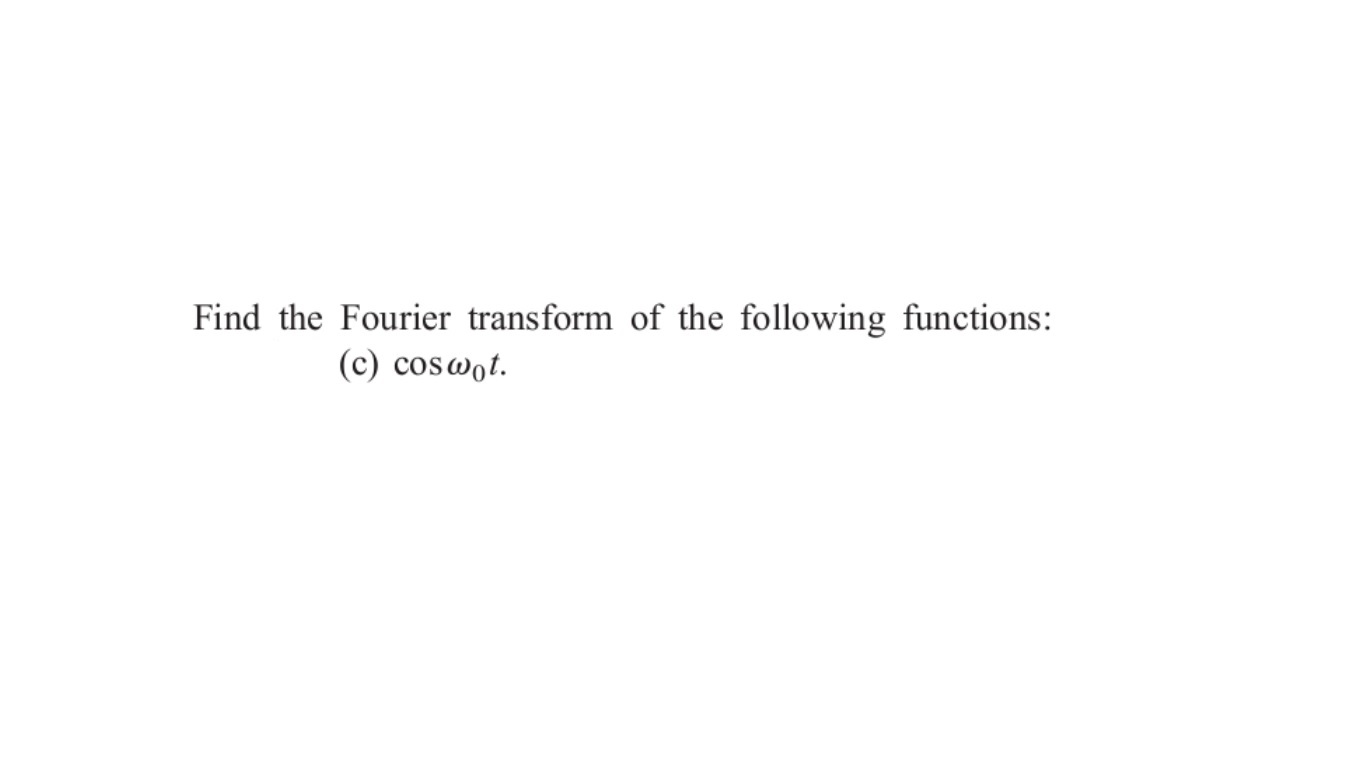Let f(t) be a real function of the proper class. By definition the Dirac distribution delta(t) is such that:
< delta, f > = f(0)
so:
int_(-oo)^(+oo) delta(t) e^(-i omega t) dt = 1
and if we translate the distribution:
int_(-oo)^(+oo) delta(t-t_0) e^(-i omega t) dt = e^(-i omega t_0)
So the Fourier transform of delta(t-t_0) is e^(-i omega t_0).
By the symmetry property of the transform if we let: t_0 = -omega_0 then the Fourier transform of e^(-i omega_0 t) is 2pidelta(omega-omega_0)
But using the expression of the cosine as:
cos (omega_0t) = (e^(i omega_0 t) + e^(-i omega_0 t))/2
and the linearity of the transform then:
cos (omega_0t) harr pi(delta(omega-omega_0) + delta(omega+omega_0))


